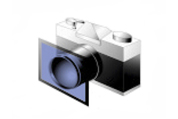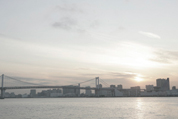Text begins from here.

 |
A subject's color is usually not consistent under different types of lighting. The color can change depending on the weather, time of day, and type of light source, such as incandescent or fluorescent. For example, a white subject can appear reddish at sunrise or sunset, and blue-greenish on cloudy days. White balance helps adjust to subject color changes resulting from different color temperatures. In film cameras, filters must be used to adjust for the color changes caused by different color temperatures. In digital cameras, this can be done by simply selecting the White Balance mode. |
Color temperature expresses light color in a form similar to ambient temperature. Color temperature is indicated using the numerical value "K" (Kelvin) and is measured using a color thermometer. |
|
|
To eliminate color casts caused by color temperature, a film camera photographer attaches a color filter to the lens or changes the type of film. A digital camera photographer simply adjusts the camera's White Balance. |
||||||||||||||||||||||||||||||
|
||||||||||||||||||||||||||||||
"Auto White Balance" automatically recognizes the type of light source and appropriately compensates the image. Individual modes can also be selected that correspond to the type of light source, such as sunlight, incandescent light and fluorescent light. |
||||||||||||||||||||||||||||
|
||||||||||||||||||||||||||||










